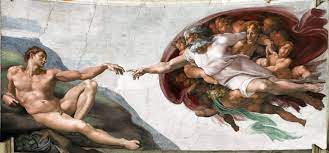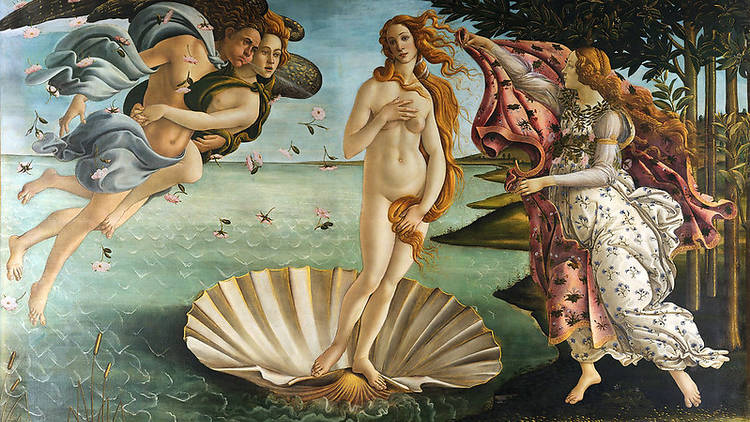
Introduction Of Best Painters of All Time:
Best Painters of All Time, When we think of art, we cannot overlook the profound impact of paintings on human culture and history. Throughout the ages, painters have wielded their brushes to create timeless masterpieces that evoke emotions, inspire generations, and captivate the soul. In this article, we delve into the lives and works of some of the greatest painters of all time. From Renaissance masters to modern visionaries, these artists have left an indelible mark on the canvas of art history.
Leonardo da Vinci – The Polymath Painter:
Leonardo da Vinci, the epitome of a Renaissance man, is revered not only for his artistic genius but also for his remarkable contributions to science and engineering. His masterpiece, “Mona Lisa,” remains one of the world’s most famous and enigmatic paintings. With his skillful use of chiaroscuro and sfumato techniques, he achieved unparalleled realism, making his paintings come alive.
Michelangelo – The Sculptor Who Painted the Heavens:
Known primarily as a sculptor, Michelangelo’s contributions to painting are equally extraordinary. His frescoes on the Sistine Chapel ceiling, including the iconic “Creation of Adam,” are celebrated for their grandeur and anatomical precision. Michelangelo’s ability to infuse human emotion and spirituality into his works is awe-inspiring.
Vincent van Gogh – The Tormented Artist:
Vincent van Gogh’s passionate and emotional style of painting sets him apart as one of the most influential post-impressionist artists. His vivid use of colors and expressive brushstrokes, as seen in “Starry Night” and “Sunflowers,” conveyed his inner turmoil and brilliance. Van Gogh’s tragic life story adds a poignant layer to his artistic legacy.
Pablo Picasso – The Cubist Trailblazer:
Pablo Picasso revolutionized the art world with his pioneering Cubist movement. His works, such as “Les Demoiselles d’Avignon” and “Guernica,” shattered conventional notions of representation and perspective. Picasso’s ingenuity and ability to embrace change continue to inspire artists to this day.
Frida Kahlo – The Symbol of Strength:
Frida Kahlo’s striking self-portraits and surreal works reflect her tumultuous life experiences and unyielding spirit. Her iconic “The Two Fridas” embodies the duality of her identity and emotions. Kahlo’s art serves as a powerful testament to female empowerment and resilience.
Claude Monet – The Impressionist Impression-maker:
As a leading figure in the Impressionist movement, Claude Monet sought to capture fleeting moments of light and atmosphere in his landscapes and water lily paintings. “Impression, Sunrise” gave birth to the term “Impressionism,” and Monet’s art continues to enchant viewers with its enchanting depiction of nature.
Rembrandt van Rijn – The Master of Light and Shadow:
Rembrandt’s exceptional ability to manipulate light and shadow earned him the title “The Master of Light.” His portraits, such as “The Night Watch,” exhibit remarkable use of chiaroscuro, evoking depth and emotion in his subjects. His work remains influential in the realms of portraiture and storytelling.
Georgia O’Keeffe – The Mother of American Modernism:
Georgia O’Keeffe’s bold and sensual paintings of flowers and landscapes established her as a pioneer of American Modernism. Her art celebrated the beauty of the natural world, and her distinct style conveyed a sense of empowerment and independence.
Leonardo da Vinci – The Enigmatic Smile of the “Mona Lisa”:
The “Mona Lisa” stands as Leonardo da Vinci’s most iconic work, with its enigmatic smile captivating viewers for centuries. The painting’s composition, use of perspective, and the mysterious allure of the subject continue to fuel debates and fascination.
Salvador Dali – The Surrealist Maverick:
Salvador Dali’s dreamlike and eccentric artworks merged reality with the surreal. His melting clocks in “The Persistence of Memory” and bizarre landscapes embodied the subconscious mind. Dali’s imagination knew no bounds, making him a leading figure in the Surrealist movement.
Jackson Pollock – The Abstract Expressionist Innovator:
Jackson Pollock’s innovative “drip painting” technique redefined abstract expressionism. His works, such as “Number 1A, 1948,” conveyed raw emotions and energy through seemingly chaotic splatters of paint. Pollock’s art encouraged viewers to find their own meanings and interpretations.
Gustav Klimt – The Golden Visionary:
Gustav Klimt’s art exudes opulence and sensuality, characterized by lavish use of gold leaf and intricate patterns. “The Kiss” and “Portrait of Adele Bloch-Bauer I” showcase his unique style, symbolizing the grandeur of the Vienna Secession movement.
Wassily Kandinsky – The Pioneer of Abstract Art:
Wassily Kandinsky is credited with creating some of the first purely abstract artworks. His paintings, like “Composition VII,” are a symphony of colors and shapes, inviting viewers to explore the emotions and ideas behind non-representational art.
Henri Matisse – The Master of Color and Form:
Henri Matisse’s vibrant and expressive use of color earned him the title “The Master of Color.” His bold cut-outs and paintings, such as “The Dance” and “Blue Nude,” showcase his ability to evoke emotion through color and form.
Leonardo da Vinci – The Last Supper’s Timeless Legacy:
The Last Supper, another masterpiece by Leonardo da Vinci, is a poignant portrayal of the momentous biblical event. Da Vinci’s mastery of perspective and his skillful depiction of human emotions make this painting a testament to his artistic brilliance.
Conclusion:
The world of art owes an immeasurable debt to these visionary painters who dared to push the boundaries of creativity and self-expression. Their works continue to resonate with us, offering a glimpse into the human experience and the power of imagination. As we celebrate these timeless masterpieces, we are reminded of the universality of art and its ability to transcend time and connect us all.
FAQs:
- Who is considered the greatest painter of all time? While opinions may vary, Leonardo da Vinci is often regarded as one of the greatest painters in history due to his exceptional talent, innovation, and contributions to various fields.
- What is the significance of the “Mona Lisa”? The “Mona Lisa” is famous for its mysterious smile, compelling composition, and Leonardo da Vinci’s artistic brilliance. It remains one of the most recognizable and enigmatic paintings worldwide.
- What is the meaning behind Salvador Dali’s melting clocks? Dali’s melting clocks in “The Persistence of Memory” symbolize the fluidity and impermanence of time, inviting viewers to contemplate the passage of time and its impact on existence.
- Why is Jackson Pollock’s art considered groundbreaking? Jackson Pollock’s drip painting technique challenged traditional artistic norms, emphasizing raw emotion and spontaneity, making his art an influential force in the abstract expressionist movement.
- How did Georgia O’Keeffe’s art impact the art world? Georgia O’Keeffe’s unique vision and pioneering spirit as a female artist helped shape American Modernism and challenged gender norms in the art world.
